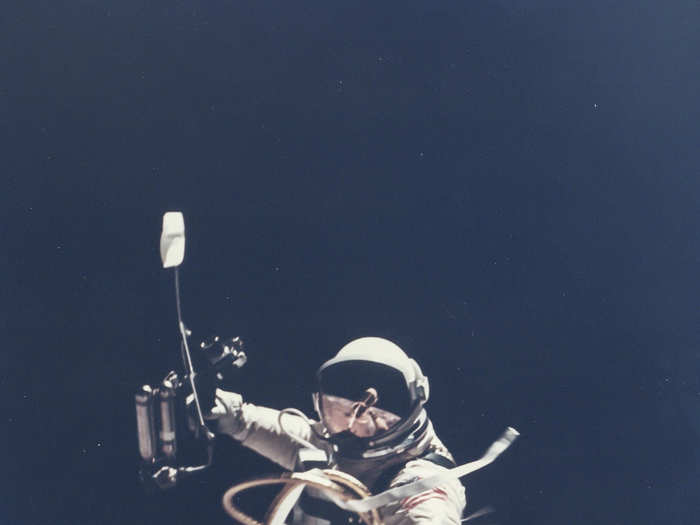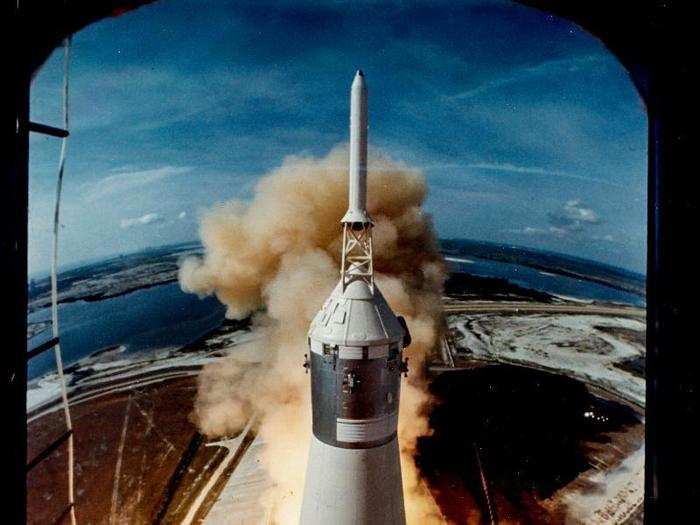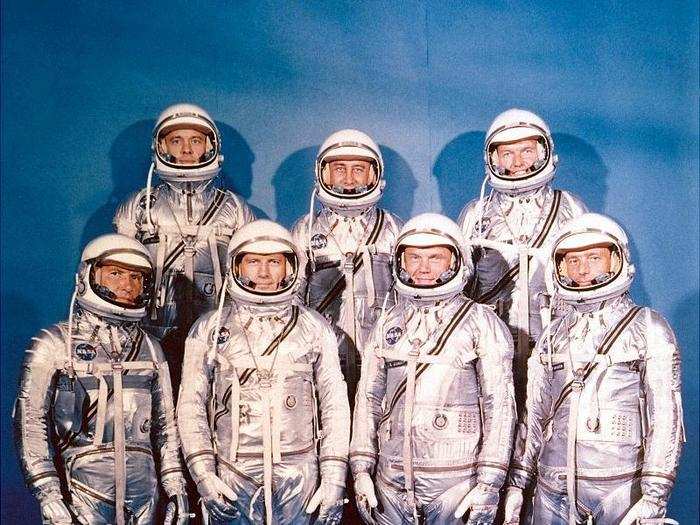21 glorious, vintage photographs of NASA's glory days
On October 24, 1946, mankind got its first photograph taken from outer space, at an altitude of 65 miles. A camera attached to a V-2 Rocket, a product of German engineering during World War II, was set up to snap a photo every second and a half. The rocket crashed back to Earth, its film roll kept safe by a steel casing.

Ed White was the first American astronaut to take a spacewalk, on June 3 1965. A cosmonaut (as Soviet space explorers are called) by the name of Alexei Leonov beat him to it by almost three months — though Leonov had a brush with death to do so, as he was forced to let oxygen out of his suit before reentering his spacecraft. Spacewalks are an important part of an astronaut's toolkit, who exit their vessels in order to make repairs on the outside.

Another shot of Ed White's historic spacewalk. "You looked like you were in your mother’s womb," White's copilot James McDivitt later told him.

Source: Bloomsbury Auctions
And a third. Ed White died in the line of work in 1967, along with astronauts Gus Grissom and Roger Chaffee. The three lost their lives when a fire broke out in the command module during a launch rehearsal for Apollo 1.

A time-exposure photograph of the Gemini 10 launch in July 1966. Astronauts John Young and Michael Collins were onboard. The Gemini program tested rendezvous and docking procedures with unmanned spacecraft in orbit, in this case the Agena Target Vehicle.

Buzz Aldrin took the first selfie in space in November 1966, during Gemini 12, the program's final mission. Aldrin then set a record for time spent outside his spacecraft (called an EVA, or extravehicular activity), at 5 and a half hours. This photo sold for £5,952, or more than $9,000. That was nearly ten times the minimum estimation of £600.

Source: Bloomsbury Auctions
View of the giant Saturn V rocket on the pad at dawn with the Moon in background, November 9, 1967. Apollo 4 was the first, unmanned test flight of the Saturn V launch vehicle.

One of the first color photographs of the Earth, taken on November 10, 1967. It was likely taken by ATS-3, an experimental satellite that took the very first color photo of Earth (sold by the same auction house in 2012) on the day it was launched, five days earlier.

This view of the Florida peninsula was caught by astronaut Walt Cunningham during Apollo 7, in October 1968. "Grabbing the Hasselblad camera, I perpetrated a photographic no-no, taking this picture looking into the sun," he said. The first manned Apollo mission to reach space, Apollo 7 was described by Space.com as "an essential reboot of the Apollo program" after the death of three astronauts during testing for Apollo 1.

Source: Bloomsbury Auctions, Space.com
One of the more famous photographs of the bunch is "Earthrise," taken during Apollo 8 in December 1968. The series of Apollo missions would culminate in surface exploration of the Moon on six occasions. Apollo 8 didn't get that far, but it was the first ever mission to send a manned spacecraft around the Moon and back home.

Apollo 11 lifts off on its historic flight to land men on the Moon, on July 16, 1969. "The camera was wired into the launch countdown, and at around minus-four seconds the camera started shooting something like ten frames per second," photographer Ralph Morse said.

Source: Bloomsbury Auctions
The very first photograph of a man — Neil Armstrong — standing on the surface of another world, in July 1969.

Buzz Aldrin accompanied Armstrong on the Moon. Twelve people have ever walked its surface, the last among them in 1972.

From space selfie to moonwalk. Here's Buzz Aldrin and the American flag at the Sea of Tranquility.

Buzz Aldrin's boot print on the lunar surface. He and Armstrong spent 21 and a half hours on the Moon.

“Houston, Apollo 11... I've got the world in my window," astronaut Michael Collins relayed to Earth during Apollo 11. Collins stayed in orbit around the Moon as his colleagues walked it.

Source: Bloomsbury Auctions
Two years later, the sun casts reflections over “Antares" during Apollo 14. Antares was the third crewed vehicle to land on the Moon, and carried Alan Shepard and Edgar Mitchell, the fifth and sixth men to walk it.

Alan Shepard and the American flag during Apollo 14, in February 1971. His companion and photographer's shadow is visible. Shepard summed up the importance of the post-Apollo 11 moonwalks: "Our two flights — Apollo 12 and 14 — proved that scientists could select a target area and define a series of objectives, and that man could get there with precision and carry out the objectives with relative ease and a very high degree of success."

Source: Bloomsbury Auctions
A panorama of the receding Moon, taken in August 1971 as crew members returned from the moon exploration of Apollo 15. It was the first mission in which astronauts used the Lunar Roving Vehicle, and the first to have astronauts spend more than 48 hours (and in fact closer to 72) on the Moon.

James Irwin salutes the American flag during Apollo 15, in August 1971. Irwin was the first of the twelve moonwalkers to pass away, at the age of 61 in 1991.

The crescent Earth rising from behind the Moon, during Apollo 17 in December 1972. Apollo 17 had the distinction of including a geologist, Harrison Schmitt. He and his colleague Gene Cernan — the last man to leave the Moon — spent three days and three hours on its surface.

Becoming an astronaut is no mean feat. See what these pioneers had to go through to get to space.

Popular Right Now
Popular Keywords
Advertisement